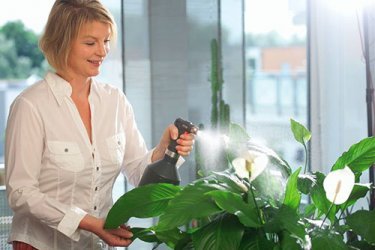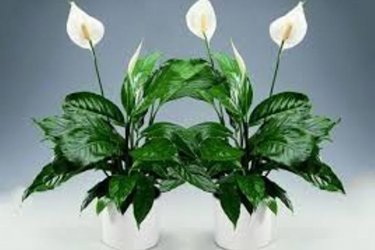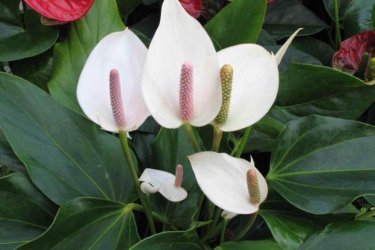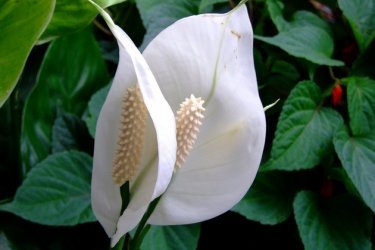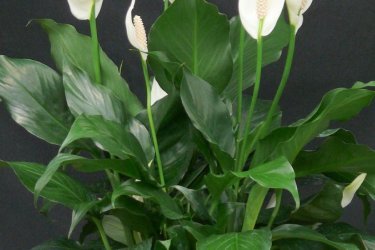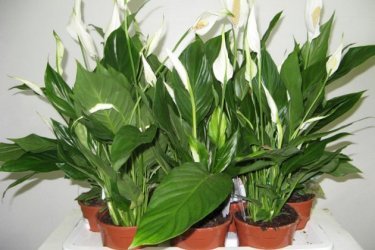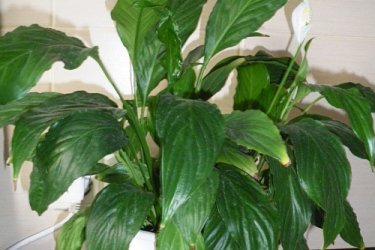Spathiphyllum
There are plants with quite original names. Take Spathiphyllum, for example. This is what botanists call it, but among the people it has a much more romantic name - Woman's happiness.
It is quite possible that the popular name justifies itself and the flower actually helps single women find a mate.
But be that as it may, any gardener will enjoy growing spathiphyllum, observing its growth and, most importantly, flowering.
There are 36 species of plants in the wild; only some spathiphyllums are usually grown as indoors:
- Wallis
- profusely blooming
- cannelifolia
- heliconifolia
Growing Spathiphyllum: what care rules should be followed
Choosing a suitable place in the room for a pot of spathiphyllum is not difficult - it loves the sun and can grow in partial shade, but strong shading can lead to stretching and shredding of the leaves. This is a clear sign that the plant does not have enough light.
The plant is more demanding on temperature; it should not be lower than +18 C; it is better to maintain it at + 23 C. It should not be placed in a draft.
Of great importance correct watering Spastiphyllum:
- moderate, but without allowing the earthen coma to dry out in winter
- abundant, accompanied by additional sprayings throughout the summer, i.e. spathiphyllum flowering period
In the articles in this section you will also find information on how to properly humidify the air around a plant in the summer, and also why such humidification is not required in the winter.
We must not forget that development activity will depend on the timely application of fertilizers of the appropriate composition. Read which ones exactly and take note.
The flowering of the plant continues for several months in a row; timely removal of old inflorescences that have lost their decorative effect will ensure its maximum duration.
Transplantation and propagation of spathiphyllum
Realize transplants It is recommended annually; as the bush grows, you will need to increase the capacity of the pot. But too large a volume of dishes can cause the spathiphyllum to stop blooming.
During transplantation, you can also propagate spathiphyllum; for this you will need to carefully divide the bush. Newly planted plants will require more careful care, in particular consistent watering and spraying.
In rare cases, the plant is propagated by seeds.
To ensure women's happiness is strong - study information about pests and diseases
Most often, the cause of plant malaise is defects. care:
- over-hydration causes yellow and brown spots to appear
- drying and blackening of leaf edges
- a pot that is too large will cause problems with the root system and stop flowering
A plant weakened by too low air humidity may be susceptible to attack by insect pests.
Remember that following all the rules of care will allow you to get a profusely flowering plant that can become an attractive accent in the design of any room.

